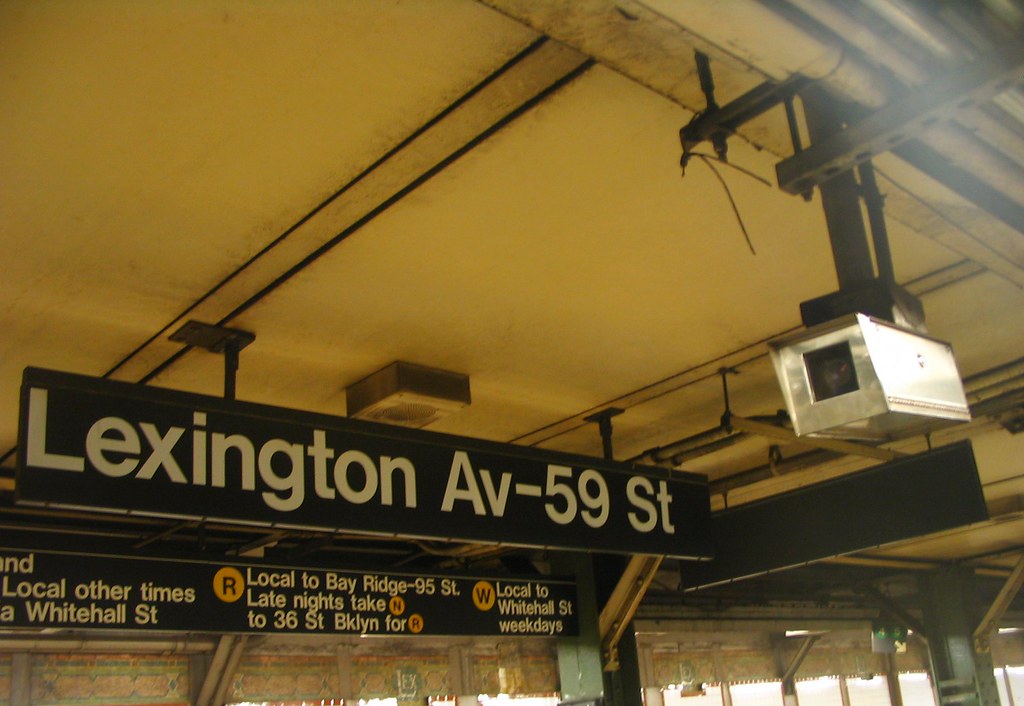Jumping these turnstiles won’t get you far. (Photo by flickr user saitowitz)
As New York City Transit officials announced yesterday that fare-beating numbers are higher than expected, today, we learn that cops ticketed fewer turnstile-jumpers last year than they had in the past. Somewhere along the line, the fare-enforcement system seems to be breaking down.
According to Pete Donohue of the Daily News, cops ticketed or arrested 87,000 fare-beaters last year, the lowest total in five years. Donohue has more on the statistics:
The police gave fare-evasion tickets to more than 68,000 riders last year and arrested an additional 19,000 for jumping the turnstile. That’s a 12% drop from the 99,000 straphangers cited in 2005, with about 86,000 getting summonses and nearly 13,000 arrested.
The NYPD pointed out that although overall enforcement is down, arrests are up. “The department focused on the arrest of more serious offenders,” Sgt. Carlos Nieves said.
For its part, the MTA told Donohue that it will “continue to work with the NYPD on cost-effective strategies such as targeting high-incidence locations and placing cameras in key areas.” However, I have to wonder about NYPD priorities. They seem highly skewed to me.
Over the last few months, we’ve heard numerous stories of a ticketing blitz targeting people on mostly empty trains who are taking up two seats. As I’ve written before, taking up two seats isn’t a violation of NYC Transit Rules of Conduct unless doing so would “interfere or tend to interfere with the operation of the Authority’s transit system or the comfort of other passengers.” No one is inconvenienced if someone spreads out on a train car with only four other people at 2:30 in the morning.
Instead of targeting these non-offenders, the NYPD should be focusing on fare-beating. If the recent numbers are to be believed, only half of one percent of all turnstile jumpers have been ticketed or arrested by cops. That’s a pitifully low number, and to get fare beaters under control, the police and the MTA should ramp up enforcement. Whether or not fare jumping will increase as the number of station agents decrease remains to be seen, but that shouldn’t stop the cops and the MTA from doing all they can to halt fare-jumping.


 For the last few months, I’ve received a steady stream of comments voicing concerns about the MTA’s approach to weekend service changes. Many SAS readers have wondered if the MTA had engage in the practice of using weekend service diversions as a cover to cut train frequencies and increase headways on Saturdays and Sundays. It sounds almost conspiratorial, but a new report by the NYC Transit Riders Council reveals that weekend service — and signs warning about service changes — are lacking.
For the last few months, I’ve received a steady stream of comments voicing concerns about the MTA’s approach to weekend service changes. Many SAS readers have wondered if the MTA had engage in the practice of using weekend service diversions as a cover to cut train frequencies and increase headways on Saturdays and Sundays. It sounds almost conspiratorial, but a new report by the NYC Transit Riders Council reveals that weekend service — and signs warning about service changes — are lacking. When Albany approved the MTA funding package last year with the payroll mobility tax as its centerpiece, I called it
When Albany approved the MTA funding package last year with the payroll mobility tax as its centerpiece, I called it  After years of planning, the MTA has taken another step forward in its quest to bring wireless Internet access to hundreds of thousands of daily commuters who use the Long Island Rail Road and Metro-North. On Friday afternoon, the agency published a
After years of planning, the MTA has taken another step forward in its quest to bring wireless Internet access to hundreds of thousands of daily commuters who use the Long Island Rail Road and Metro-North. On Friday afternoon, the agency published a 
 Yet, another story about the MTA’s security cameras betrays the authority’s assurances. According to a report in today’s amNew York, half of the subway system’s 4313 security cameras
Yet, another story about the MTA’s security cameras betrays the authority’s assurances. According to a report in today’s amNew York, half of the subway system’s 4313 security cameras 















